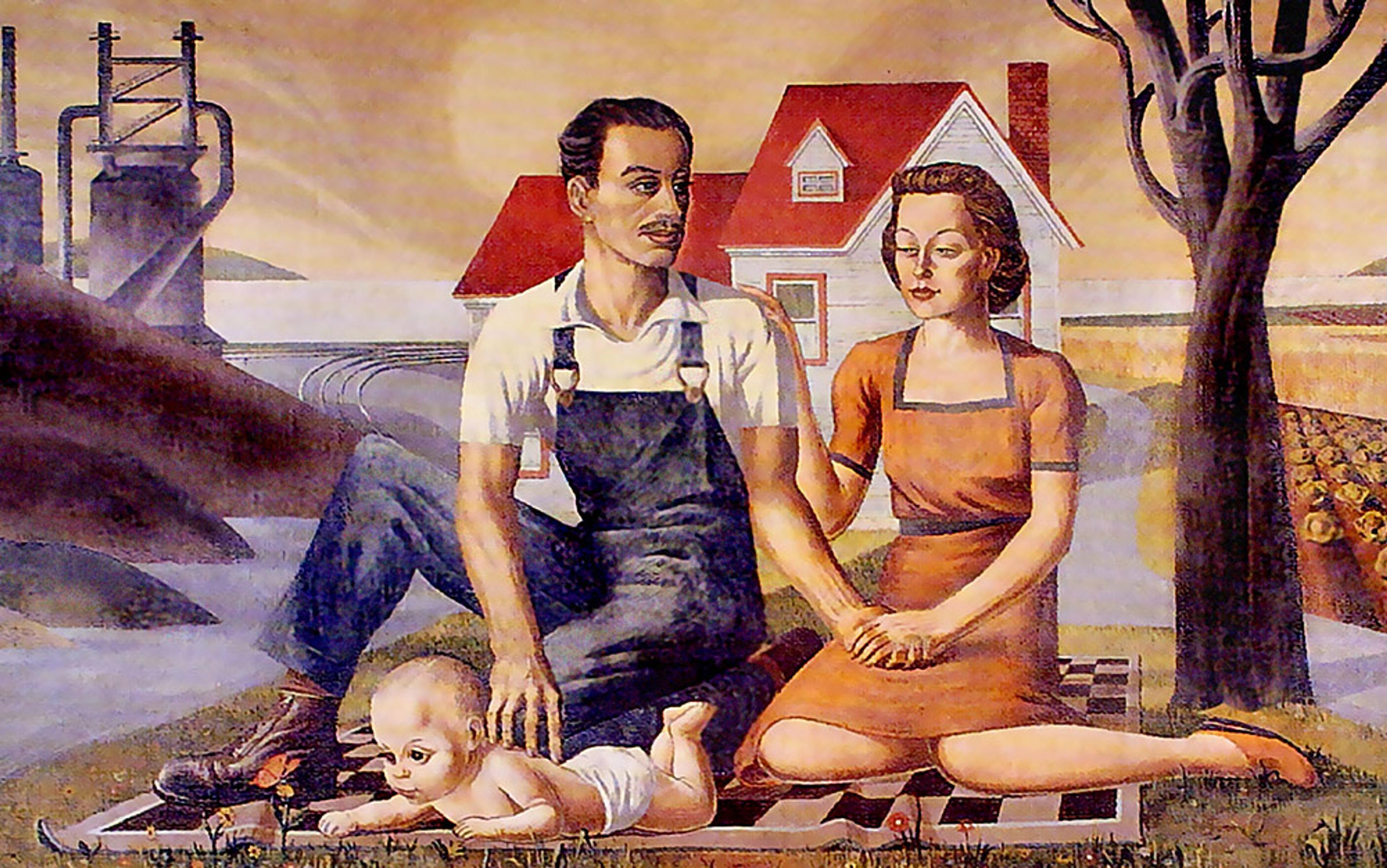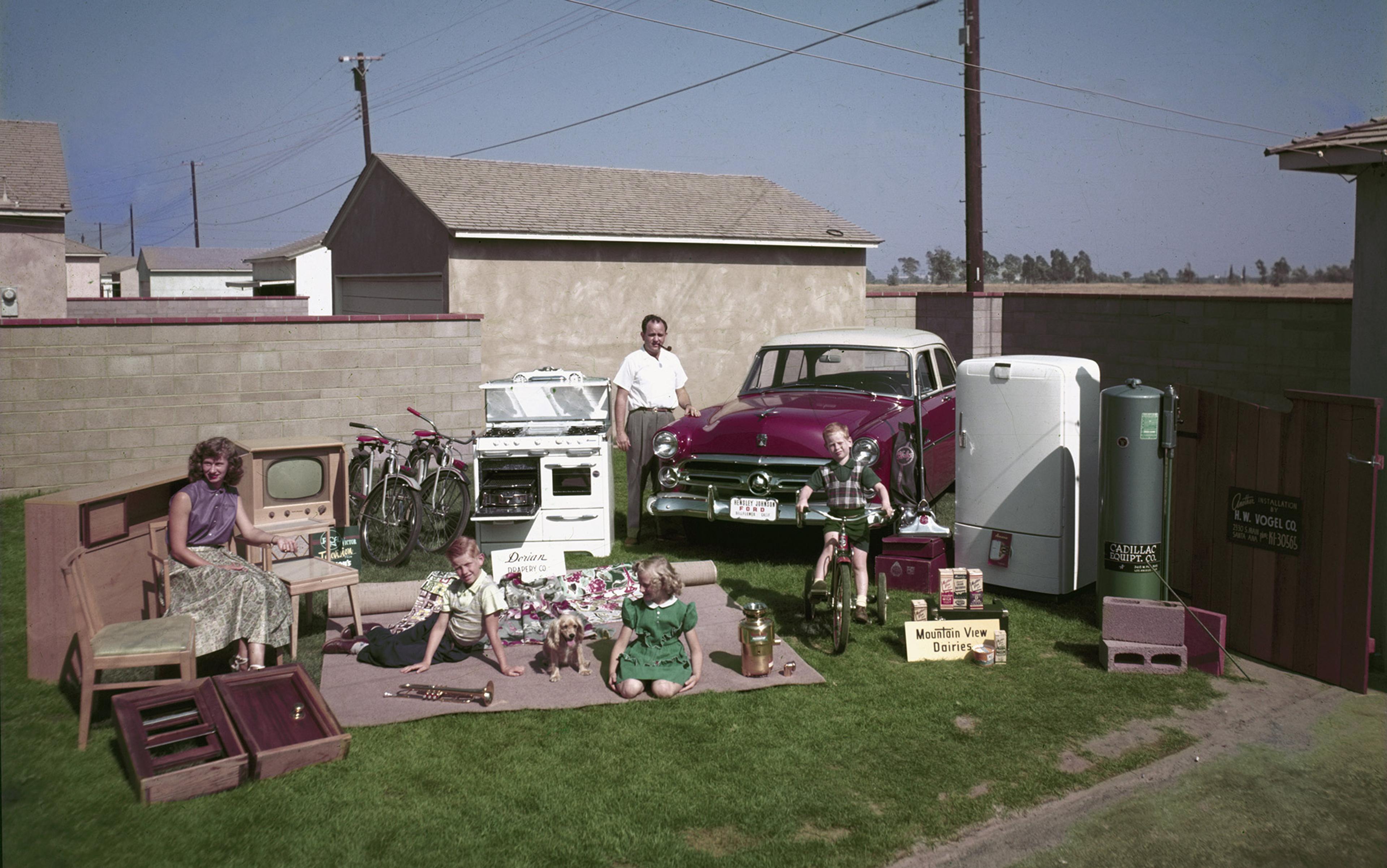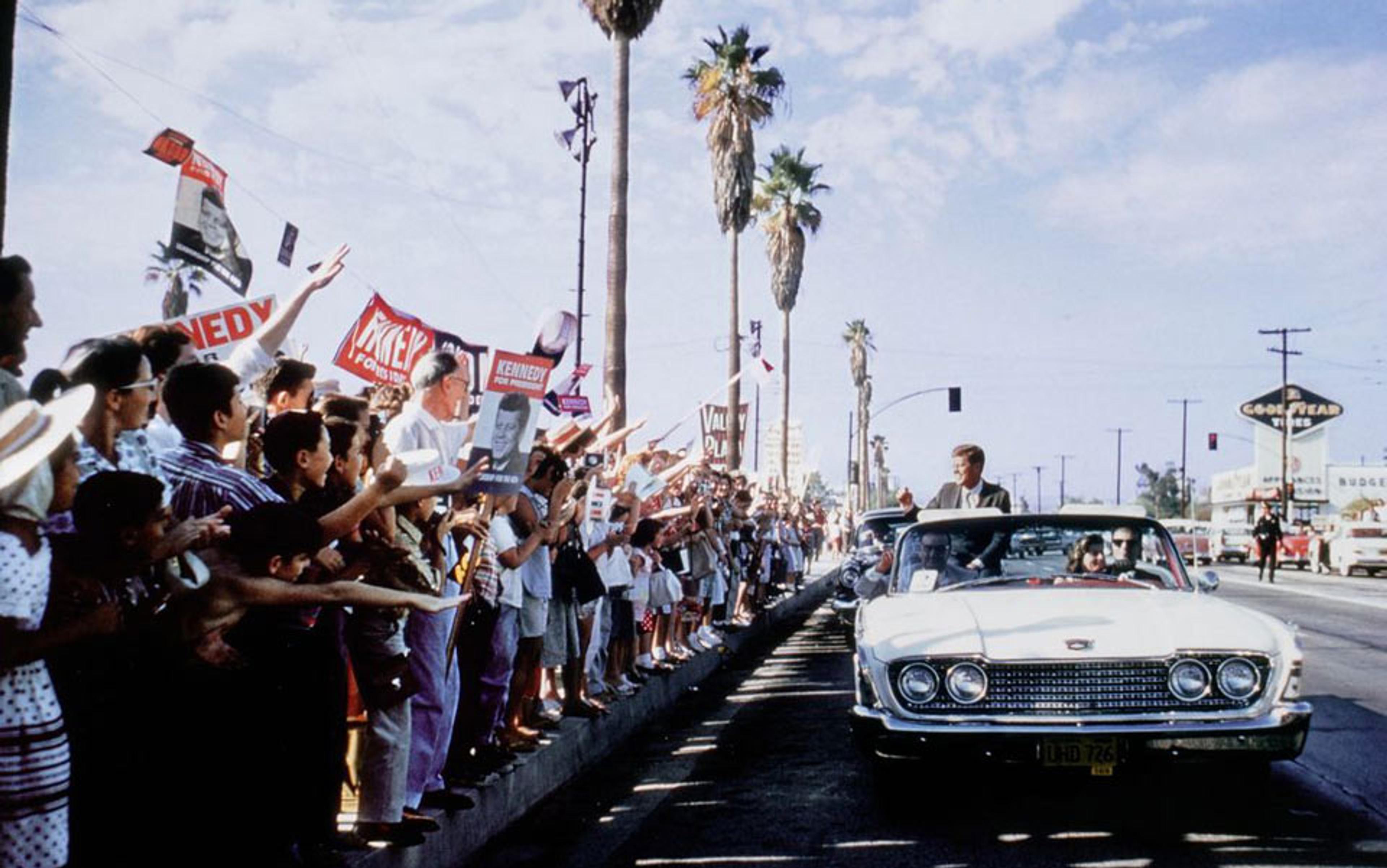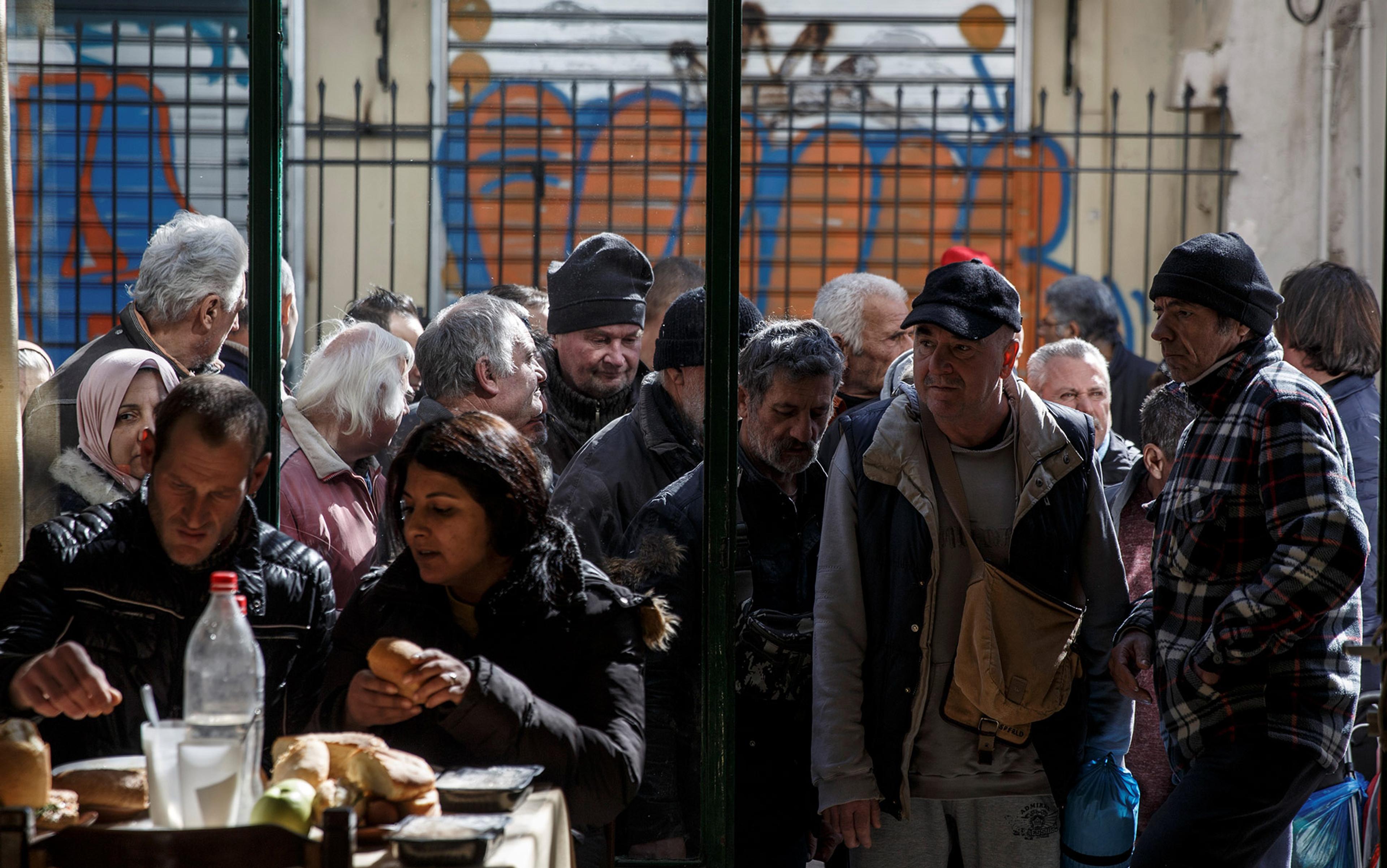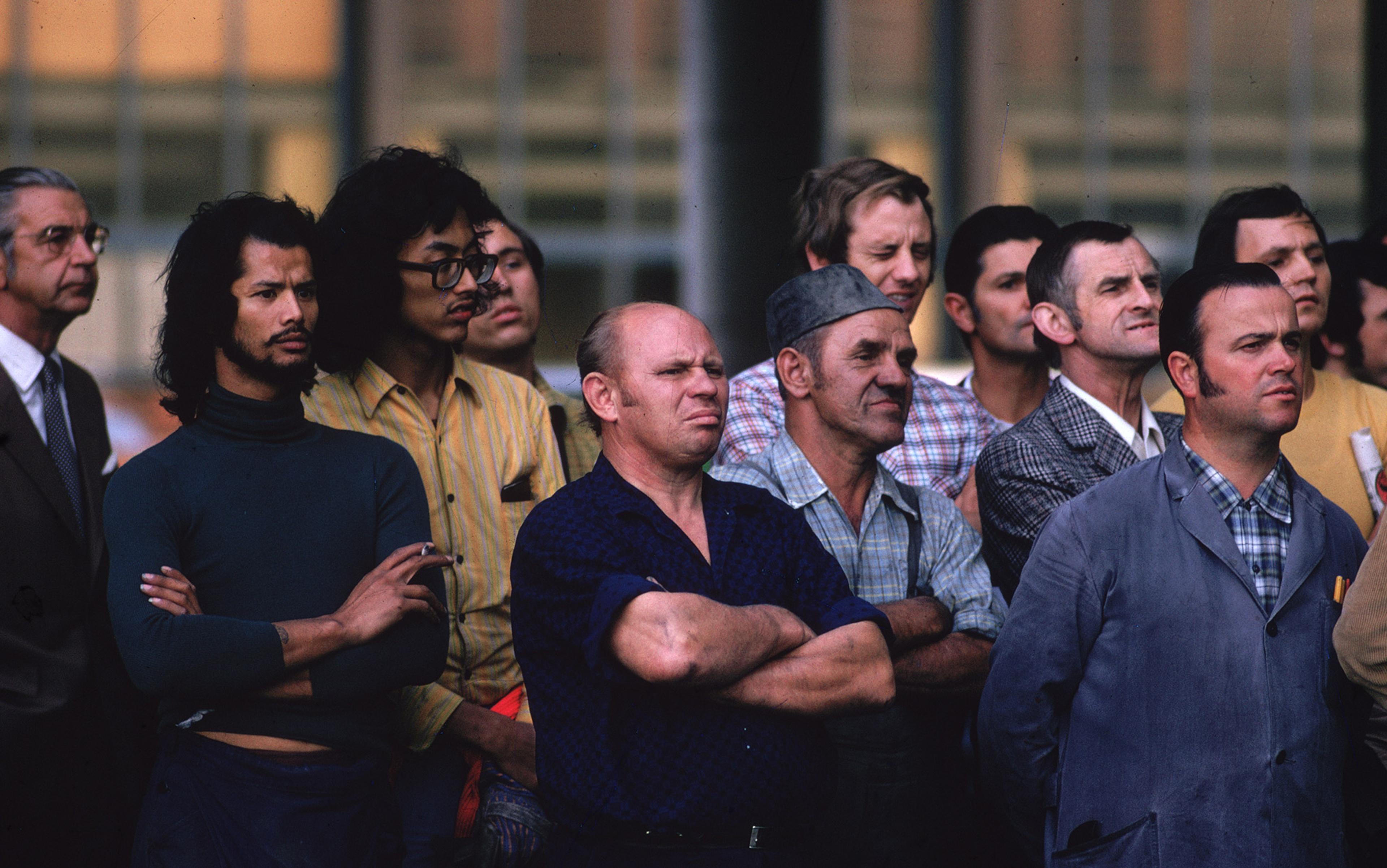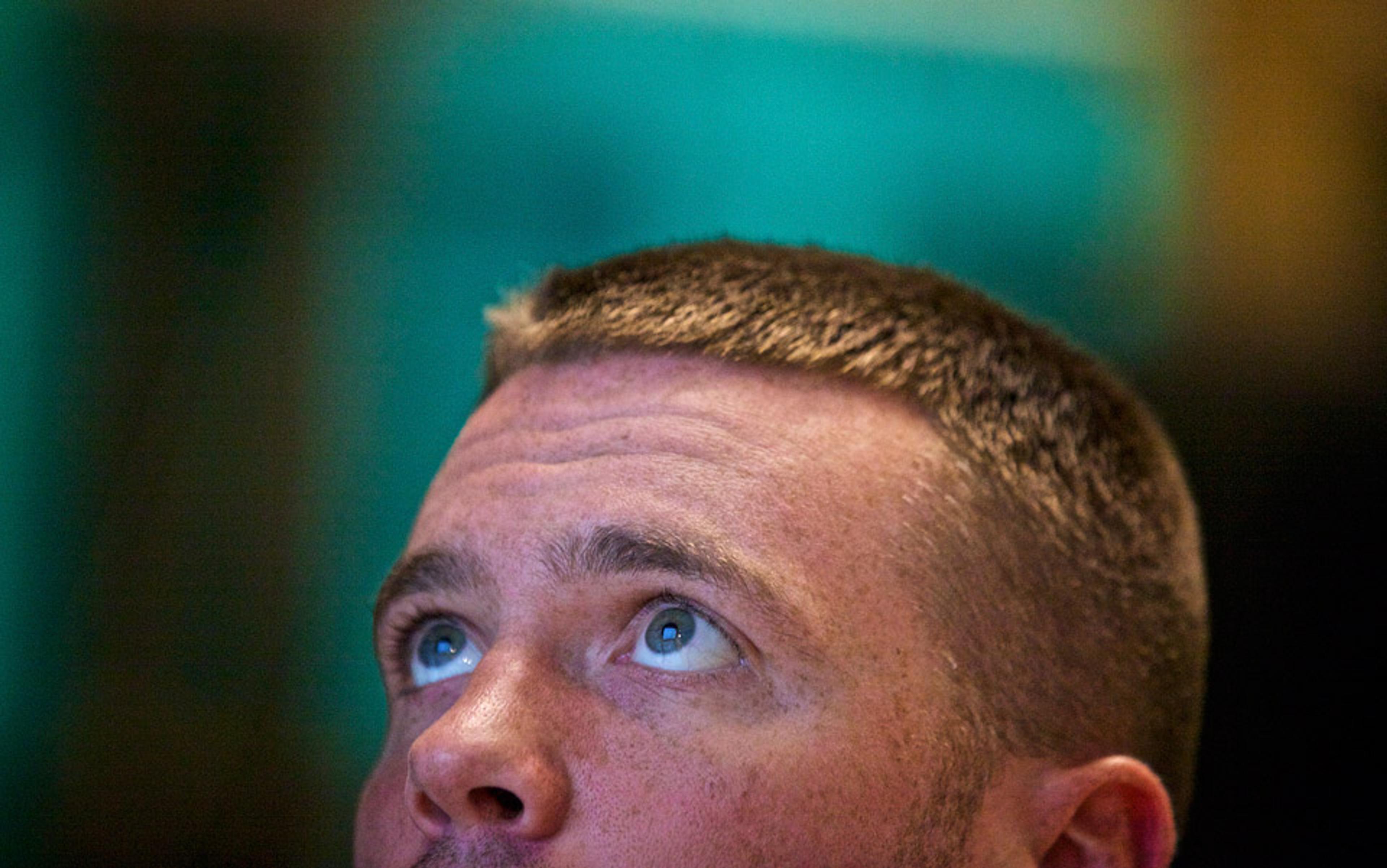Today, Americans think of Franklin Delano Roosevelt’s New Deal – the historic 20th-century expansion of the social state in the United States – as definitive of liberalism. At the time, however, both pro- and anti-New Dealers called themselves liberal. New Dealers accused opponents of their expanded social state of hanging on to an antiquated idea of liberalism. Opponents of the New Deal charged, as one newspaper put it in 1944, that ‘New Deal liberalism is phony liberalism.’ Although Socialists and Communists did not wish to be so defined, it did seem for a time that, as one columnist wrote in 1948, ‘every body in every party is a liberal’.
The question of the New Deal’s place in political history preoccupied the generation. Much of the debate took place in terms of a contest over how the New Deal fit into or departed from the history of liberalism. Liberal and liberalism, after all, were already old terms by the 20th century. Was the New Deal a natural evolution of liberalism or a dangerous repudiation of it, ‘the road away from liberalism’, as the former New Dealer Raymond Moley charged in 1938?
Republican opponents portrayed the New Deal as a dangerous species of collectivism that falsely wrapped itself in the banner of liberalism. They did not buy Roosevelt’s claims that he was helping to rescue the country and its capitalist system from dangerous extremism. Instead, they saw the New Deal as a form of extremism itself and a repudiation of liberalism as it was popularly understood. According to the former president Herbert Hoover, the New Deal’s pseudo-liberalism sought to ‘place the Federal government in domination over the souls of men’. In his 1940 Republican presidential nomination acceptance speech, Wendell Willkie invoked the word ‘liberal’ five times. He claimed the authority of liberalism for himself and his party, and faulted Roosevelt for having ‘distorted’ liberalism.
When, in a 1938 radio address, Roosevelt celebrated liberalism as the ideology of the New Deal, a reporter for the Times of India felt the need to clarify for the newspaper’s readership that Roosevelt’s version of liberalism ‘does not mean a man who places more emphasis on individual freedom than on group action or government control’. It was necessary to clarify because in India, like everywhere else in the world, liberal meant something different from what it was coming to mean in the US. For New Dealers, the hallmark of liberalism was active government’s ‘continuing responsibility to meet continuing problems’, as Roosevelt said. Older meanings of liberal, still predominant elsewhere in the world, saw the state as the enemy of liberty. Anti-New Dealers in the US shared with the rest of the world this more established view of what liberalism meant.
As New Dealers sought to remake the meanings of liberal and liberalism, a new term entered the political lexicon: neoliberalism. Much in vogue today among academics and activists, the phrase is usually understood to mean market-oriented approaches to structural problems. It is almost always used as shorthand pejorative for policies or programmes consonant with right-wing global capitalism. In the US, however, the term was initially, and frequently, used by critics of the New Deal to highlight its alleged betrayal of traditional liberalism. For these critics, neoliberalism did not mean a purified form of free-market mania but quite the opposite: a dangerous combination of planning and collectivism that verged on socialism.
In February 1951, Moley returned to one of his favourite themes: the abuse and degradation of the word ‘liberalism’ by New Dealers and their descendants. He called liberalism a ‘kidnapped mot’ that ‘has been banged around so much and has caught so many virulent infections that it may be impossible to restore it to health’. Moley argued that Roosevelt and his followers had turned liberalism, the traditional US ideology of small government and economic liberty, on its head.
New Dealers, Moley felt, had distorted the term to the point where it had lost its original meaning. He proposed in its stead a new phrase – ‘neoliberal’ – to describe ‘the mixture of Socialism, politics, promises and bad economics that afflicts us today’. A neoliberal, according to Moley, was a person ‘who has stolen the good word “liberal” out of an honoured past’. He wrote that neoliberalism ‘consists in the main of support of any and every measure designed to enlarge the power of the government and to restrict the area of individual freedom’. He thought a liberal was someone who ‘fought for individualism against the state’. Neoliberals, he wrote disapprovingly, were forging an ‘authoritarian mechanism… under the name of a welfare state’. Moley was not alone in using the term neoliberal to refer to what one journalist in 1942 called the ‘motley host of leftists belonging to this New Deal era’, who had remade liberalism into an ideology that posited government spending, regulation and planning as essential facilitators rather than enemies of liberty.
Whether neoliberalism meant a revival or a repudiation of liberalism depended on one’s understanding of the latter term, which remained in dispute through the 1950s. Complaining that ‘liberal’ had entered a ‘semantical hall of mirrors’, the Los Angeles Times worried in 1947 that a term that had properly and traditionally belonged to believers ‘in the greatest possible freedom and consequently the least possible government’ had been contaminated by ‘the authoritarians in the broad belt of territory which is bounded on the left by the Communists and on the right by the orthodox Democrats’. Following the linguistic traditions of anti-New Dealism, the newspaper called the latter ‘neoliberals’.
In 1955, the theologian and public intellectual Reinhold Niebuhr also highlighted the ‘semantic difficulties arising from the shift in meaning of the word liberal’. Noting that liberalism had ‘achieved two contradictory definitions’, he wrote that contemporary conservatism ‘may claim a right to the title of “liberalism” on the ground that its promise of gaining justice through economic liberty is actually closer to the old classical economic liberalism than the new liberalism is’. When Niebuhr wrote this, conservatism was beginning to speak its name as a political ideology in opposition to Democratic support for the New Deal, Civil Rights and the welfare state. But even then, the Republican Party did not fully reject liberalism. Their presidential platform did not use the word ‘conservative’ until 1956 and, even then, it was to quote the incumbent Dwight Eisenhower calling for a healthy balance between liberalism ‘in all those things which deal with people’ and conservatism ‘in all those things which deal with people’s money’.
Some enemies of the New Deal decided relatively early on to cede the term ‘liberal’ to Roosevelt and his supporters. In 1937, Merwin Hart, Roosevelt’s Harvard classmate and president of the anti-government National Economic Council, asserted – much as the president was to do in his Fireside Chat the next year – that ‘the natural party division’ was liberal and conservative, ‘with the liberals believing in large public spending and the injection of government bureaucracy into everyday life, and the conservatives believing in curbing public spending and keeping private enterprise as free as possible from government interference’. For Hart, the matter was simple: ‘We assume it to be true that the Democrats are the liberals, the Republicans are the conservatives.’
Hart’s assumption was prescient, but a far greater number of New Deal opponents refused to abandon their self-description as liberal, and very few of them adopted the identity of conservative. Critics preferred to condemn the ‘false liberalism’ of the New Deal.
Hoover, Roosevelt’s predecessor, remained the most vociferous and consistent critic of his claim to liberalism. Throughout the New Deal and the Second World War, Hoover condemned what he variously called the New Deal’s ‘pseudo’ or ‘totalitarian’ liberalism. For him, the ‘truest definition of liberalism’ entailed ‘opposition to regimentation, whether royal, clerical, or economic’, and, on this front, the New Deal was responsible for what the Republican National Committee in 1935 called ‘the degradation of liberalism’.
By the 1950s, even before the vast majority of Republicans fully embraced the label of conservative, most of them stopped self-identifying as liberal
Ogden Mills, who had served as Hoover’s Secretary of the Treasury and became a fierce opponent of the New Deal, called his book-length critique of Roosevelt’s presidency Liberalism Fights On (1936). ‘Our American social philosophy can be expressed in the single term – Liberalism,’ began Mills, who saw no contradiction between his liberalism and his hatred of the New Deal, which he called ‘totally inconsistent with American Liberalism and the principles underlying our American civilisation’. For this group of critics, the problem was not that the New Deal embodied liberalism but that it dangerously distorted the meaning of the term.
The nation’s most important pundit, Walter Lippmann, changed his mind about whether the New Deal was an affirmation or rejection of liberalism. In 1935, he called liberalism ‘the best descriptive term’ for the New Deal. Lippmann explained that the New Deal represented a ‘New Liberalism’ (what he also called a ‘regenerated liberalism’), a modernised, realistic update of an ideology that was already being claimed by false pretenders. ‘To be sure,’ Lippmann elaborated, ‘its Liberalism is not of the old laissez-faire type. It repudiates the unrestrained competition of the 19th-century liberals, which paradoxically enough, has been taken over bodily by the present-day conservatives and reactionaries.’
Only a year after he wrote those words, however, Lippmann began to reconsider the relationship between the New Deal and liberalism. Rather than seeing the New Deal as the embodiment of the New Liberalism he longed for, he began to fear it as anti-liberal. Sharing his second thoughts in April 1936, he worried that Roosevelt lacked an ‘instinctive appreciation of American liberalism’ in ‘its oldest and most authentic sense’. Claiming that the New Deal’s goal of security required a ‘very powerful government’ that was at odds with the liberal suspicion of state power, Lippmann performed an about-face on the New Deal. In his influential book An Inquiry into the Principles of the Good Society (1937), he wrote that ‘the first principle of liberalism’ is that ‘the market must be preserved and perfected’, and that the nascent welfare state threatened free markets. In this reversal, Lippmann shifted from endorsing the New Deal to proposing a different kind of new liberalism that some of his followers soon came to call ‘neoliberalism’, which would split the difference between the unrealistic old liberalism of its opponents and the dangerous collectivism of its supporters.
By the 1950s, even before the vast majority of Republicans fully embraced the label of conservative, most of them stopped self-identifying as liberal. They willingly assigned the designation, now largely a term of derision, to their political opponents. Rather than complaining about the New Deal perversions of liberalism, they came to reject liberalism full stop, and discarded the name. Instead of decrying Democratic misuse of liberal, Dwight Eisenhower, then the president of Columbia University, joked in 1949 that a liberal is ‘a man in Washington who wants to play the Almighty with your money’. The stereotype of liberals as taxers, spenders, lovers of big government and African-American Civil Rights, became dominant as fewer and fewer New Deal critics echoed the claims of Hoover and Mills that liberalism was the ideology of US freedom.
Historically, just two groups in the US have claimed to be neoliberal, and then only briefly. During the 1930s and ’40s, the first group, libertarian in orientation, sought to defend free markets in an era of growing state power and legitimation. The second group sought to protect what they could of New Deal liberalism in an age of free-market retrenchment in the 1970s and ’80s. Both projects were short-lived.
Inspired by Lippmann’s concerns about the collectivist dangers of the New Deal and about the impossibility of returning to an unrealistic laissez-faire order, a group led by the economist Friedrich A Hayek organised the Mont Pelerin Society in 1947. Their goal was to maintain the spirit of 19th-century liberalism by using the state to promote free markets and, in the organisation’s early years, members sometimes used the term neoliberalism to describe this project. In the article ‘Neo-Liberalism and its Prospects’ (1951), Milton Friedman, a participant in the original Mont Pelerin meeting, called for combining the ‘19th-century goal of laissez-faire’ with a ‘state that would police the system, establish conditions favourable to competition and prevent monopoly’.
But these libertarian economists drifted toward an increasingly anti-statist position, becoming less interested in finding a middle ground between the old liberalisms and the new imperatives of the state. Friedman, for example, abandoned the neoliberal description by the mid-1950s, calling himself a ‘radical liberal’ or simply a radical for a while. In his 1998 memoir, co-written with his wife Rose, he approvingly noted the shift in public opinion ‘away from liberalism as popularly understood and toward free-market conservatism’, positioning himself as an advocate of the latter.
A two-decade-long silence ensued. Critics stopped calling New Deal liberalism a perversion of US liberalism. Unlike opponents of the New Deal, enemies of the Great Society did not see Lyndon Johnson as sullying their liberalism. They had long since abandoned liberal as a political self-description. As the term liberal became both less ambiguous and less central in US political culture, there became less need to modify it and, perhaps as a result, the neoliberal label fell into disuse. Why modify or transform a discarded ideology?
In the late 1970s, a group of Democratic-leaning journalists, intellectuals and politicians revived the term neoliberalism, attempting to save New Deal liberalism from what they saw as its excesses and mistakes. These thinkers, associated with the New Republic and the Washington Monthly, sought to find a third way to retain what their leader, Charles Peters, called ‘a common-sense revolt against the automatic responses of conventional liberals’. Peters, editor of the Washington Monthly, titled his call-to-arms ‘A Neoliberal’s Manifesto’ (1983). Like Friedman, however, he abandoned it within a few years, save for a late prediction of a ‘second coming of neoliberalism’ in the presidency of Bill Clinton. Peters, who called himself the ‘sole culprit at the christening’ of the term, did not ponder, and likely was unaware, that he was using a term that had once been claimed by his ideological foe, Friedman.
Neither Obama nor any other significant leaders or social movements have claimed the liberal tradition
The story of the term neoliberalism is a tale about the changing meaning, power and, ultimately, diminishment of liberalism as a living political ideology. Neoliberalism first came of age in the 1930s and ’40s during the rise of the New Deal order. This was a time of change and dispute about the meaning of liberalism. Both New Dealers and their enemies battled to be understood as the proper representatives of a great liberal tradition. Neoliberalism’s second life in the 1970s and ’80s coincided with the decline of the welfare and social state built by the New Deal. In the late 1980s, when presidents Ronald Reagan and George H W Bush used the term as a taunt, the reputation of liberalism reached its nadir. What Reagan and company meant when they attacked liberals and liberalism, was exactly the kind of social and welfare programmes exemplified by the New Deal.
In the past decade, the repopulisation of the phrase neoliberalism has not been accompanied by a renaissance of liberalism in the US political vocabulary. The American Prospect, a liberal political journal, began a concerted campaign to revive the term about a decade ago, but it has largely failed. Although its revival has been periodically predicted, especially with the election of Barack Obama in 2008, neither the president nor any other significant leaders or social movements have claimed the liberal tradition. Nor have any of this year’s Democratic candidates: Bernie Sanders, as it is well known, calls himself a ‘democratic socialist’ and Hillary Clinton has preferred to depict herself as a ‘progressive who gets things done’.
Neoliberalism today signals the return of laissez-faire-ism, a shrunken public sphere, and the market domination that Roosevelt hoped to overturn. Succeeding and largely nullifying the New Deal order, it displaces all other liberalisms. The past shows, however, that what Roosevelt’s successor, Harry Truman, called ‘progressive liberalism’ offered a political model nearly the opposite of the contemporary mania for austerity and privatisation. A look at this forgotten past offers a glimpse of the progressive potential of liberal politics when neoliberalism served as a marker for policies that helped to construct the US welfare state. Although the term is widely perceived on the left as ‘the ideology at the root of our problems’, perhaps in the future advocates of a public-oriented, anti-austerity, regulatory state committed to wiping out inequality and promoting civil rights can proudly reclaim the label that was used to vilify Roosevelt and his supporters during the New Deal.
